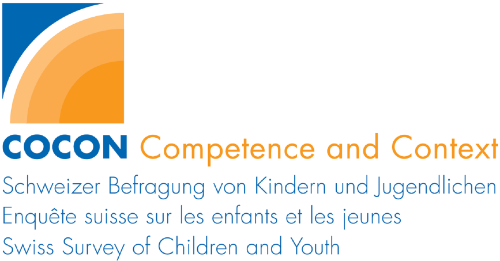Cohort 1 represents the sample of children who were 6 years old in 2006. The study’s goal is to accompany these children until the age of 21. This allows us to explore the entire development from school entry until the beginning of adulthood. It is of utmost importance to continue interviewing as many of the initially interviewed children as possible to keep a representative sample of the Swiss population.
| Survey period: |
January until April 2006 |
| Interviewees: |
Children, their principal caregivers and teachers |
| Survey instruments used: |
| Children |
Personal interviews with a laptop at their home (CAPI) |
| Principal caregivers |
Personal interviews with a laptop at their home (CAPI) and paper and pencil questionnaires |
| Teachers |
Paper and pencil questionnaires |
|
| Sample size: |
N=1273 |
| Survey period: |
March until June 2007 |
| Interviewees: |
Principal caregivers |
| Survey instruments used: |
| Principal caregivers |
Telephone interview (CATI) and paper and pencil questionnaires |
|
| Sample size: |
N=1192 |
Cohort 1, Wave 2: Intermediary Survey
| Survey period: |
May until July 2008 |
| Interviewees: |
Principal caregivers (only those whose children did not yet attend primary school at the time of the second wave in 2007) |
| Survey instruments used: |
| Principal caregivers |
Telephone interview (CATI) and paper and pencil questionnaires |
|
| Sample size: |
N=128 |
Cohort 1: Wave 3
| Survey period: |
March until May 2009 |
| Interviewees: |
Children, their principal caregivers and teachers |
| Survey instruments used: |
| Children |
Personal interviews with a laptop at their home (CAPI) |
| Principal caregivers |
Personal interviews with a laptop at their home (CAPI) and paper and pencil questionnaires |
| Teachers |
Paper and pencil questionnaires |
|
| Sample size: |
N=1118 |
Cohort 1, Wave 4: Intermediary Survey
| Survey period: |
January until April 2011 |
| Interviewees: |
Children, their principal caregivers and teachers (only those who are expected to make the transition to lower secondary-school early) |
| Survey instruments used: |
| Children |
Personal interviews with a laptop at their home (CAPI) and paper and pencil questionnaires |
| Principal caregivers |
Personal interviews with a laptop at their home (CAPI) and paper and pencil questionnaires |
| Teachers |
Paper and pencil questionnaires |
|
| Sample size: |
N=143 |
Cohort 1, Wave 4
| Survey period: |
January until May 2012 |
| Interviewees: |
Children, their principal caregivers and teachers |
| Survey instruments used: |
| Children |
Personal interviews with a laptop at their home (CAPI) and paper and pencil questionnaires |
| Principal caregivers |
Personal interviews with a laptop at their home (CAPI) and paper and pencil questionnaires |
| Teachers |
Paper and pencil questionnaires |
|
| Sample size: |
N=1038 |
| Survey period: |
February to March 2013 |
| Interviewees: |
Children and their principal caregivers |
| Survey instruments used: |
| Children |
Telephone interview (CATI) |
| Principal caregivers |
Paper and pencil questionnaires |
|
| Sample size: |
N=950 |
Cohort 1, Wave 5: Intermediary Survey
| Survey period: |
February to March 2014 |
| Interviewees: |
Children and their principal caregivers |
| Survey instruments used: |
| Children |
Telephone interview (CATI) |
| Principal caregivers |
Paper and pencil questionnaires |
|
| Sample size: |
N=149 |
Cohort 1, Wave 6
| Survey period: |
January until May 2015 |
| Interviewees: |
Children, their principal caregivers and teachers |
| Survey instruments used: |
| Children |
Personal interviews with a laptop at their home (CAPI) and paper and pencil questionnaires |
| Principal caregivers |
Personal interviews with a laptop at their home (CAPI) and paper and pencil questionnaires |
| Teachers |
Paper and pencil questionnaires |
|
| Sample size: |
N=930 |
| Survey period: |
May to June 2017 |
| Interviewees: |
Children |
| Survey instruments used: |
| Children |
Telephone interview (CATI) |
|
| Sample size: |
N=826 |

